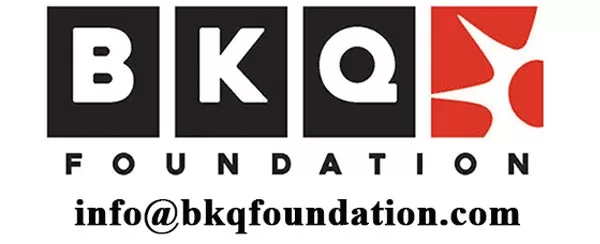The only three words better than “I love you” is when you unaticipatedly hear the shrill of the bofrot seller, “Bofrot is here”, “Bofrot is here”, on a sultry afternoon. “If not for the grace of God and the sacrifice of Jesus, bofrot would have been my religion”, said Joey Bruqz from the institute of Beans and Positivity. It becomes an extreme sport when you buy it in traffic when the cars starts to move. Bofrot is that type of meal any Ghanaian individual I have come across cling to when things start to fall apart in their solar plexus. The taste is breathe taking. No matter the period, there’s always time for some bofrot. It is consumed with no prescription, but it best suits your morning when it is complemented with some Hausa koko and a pinch of groundnut (nkatie), and in the middle part of the day with some locally brewed drink “asaana” or Fan Ice cream, the taste alone is nostalgic. In Wakanda bofrots are sold at concession stands. The dawn of innovation has brought about many varieties such as cho’frot, milk frot and meat frot, kind courtesy bofrotGh. But according to my very good friend Mannie Ross, a dedicated bofrot consumer like myself, he believes that bofrot is sacred and therefore should not be subjected to concoctions. The ancestral name for bofrot is “toogb33”, which means to stump one’s feet on the ground in waali or dagaati. This name emanated when children of these communities cry and forcibly stump their feet on the ground upon their mother’s refusal to purchase a piece for them when they spot the lady carrying the foodstuff on sale. Down here in the south it shares the same meaning with a goat’s testicle in the Ga lingo. Due to its sacred nature, loads of countries in Africa and beyond have their own bofrot. In Nigeria and Sierra Leone its puff-puff, mikate in Congo, beinye in Cameroon, or kala in Liberia. There exists a similar version known as loukoumades. Its history comes from ancient Greece. This traditional Greek honey puffs were offered as a winner’s reward during the first Olympic games. I laughed my a*s off so hard that, I accidentally broke the screen of my cell phone when I asked a couple of my erudite friends the English name for bofrot. The responses were humoristic. According to experts, author Derry Dean and Ethel Coffie, bofrot/boflot/toogb33 is a corruption of the word Deep Fried Bun Loaves. Over the years and the astounding Fante brofolizations, it has been represented as Puff Loaves/ Buff Loaves/ Puff Floats/ Bun Floats/ Boflot. Bofrot’s actual hometown is Holland. The Dutch colonists taught the Fantes of the coast. They (Dutch) call it OLIEBOLLEN. An Oliebol (Dutch pronunciation: [o: libÉl], plural oliebollen. About this sound pronunciation (help info) is a traditional Dutch and Belgian food. They are called oliebollen (literally: oil boils) in the Netherlands, while in Belgium they are called smoutenbollen (literally: Lard balls although the red “smout” is of rapeseed oil). In English they are more commonly known as Dutch Doughnuts or Dutchies Oliebollen are a variety of dumping made by using an ice-scooper of two spoons to scoop a certain amount of dough and dropping the dough into a deep fryer filled with hot oil. In this way, a sphere shaped oliebol emerges. Oliebollen are traditionally eaten on New Year’s Eve and at funfairs. Moreover, research conducted over the years indicates that Ghanaian’s scholarly or unscholarly still struggle with the phonetics encompassing the term bofrot. In the end, it all comes down to choices, whether Bofrot or Boflot, Buff Loaves or Puff Floats, oliebollen or loukoumades, one is always better than the other, but as for me there is no way in hell I am saying I will buy buff loaf in a koko queue. It’s a bofrot democracy. Source: Prince Asamoah]]>
Bofrot Democracy: the rise of the yeast (bofrot)
Reading Time: 4 mins read
Recent Posts
- Cynthia Morrison faces jail term over contempt charges
- Survey: NPP’s Chris Arthur projected to win Agona West by landslide
- President Jerry John Rawlings – Four Years On
- Friday, November 8 not a public holiday – Interior Ministry
- Tragic: Speeding NDC vehicle kills the only child of a mother at North Dayi
- Pay NABCO trainees if you care about Ghanaian youth – Mahama tells Bawumia
- Suspend planned strike – FWSC pleads with CLOGSAG
- Some lawyers sacrifice ethics for ‘cheap’ political gains – Attorney-General
Popular Stories
-
Survey: NPP’s Chris Arthur projected to win Agona West by landslide
-
Cynthia Morrison faces jail term over contempt charges
-
Friday, November 8 not a public holiday – Interior Ministry
-
US Visa Restriction Policy: A ‘Pilfered Intellectual Property’ of Ghanaian Professor, Rev. Prof. E.Y. Nash
-
Tragic: Speeding NDC vehicle kills the only child of a mother at North Dayi

ABOUT US
Newstitbits.com is a 21st Century journalism providing the needed independent, credible, fair and reliable alternative in comprehensive news delivering that promotes knowledge, political stability and economic prosperity.
Contact us: [email protected]
@2023 – Newstitbits.com. All Rights Reserved.











